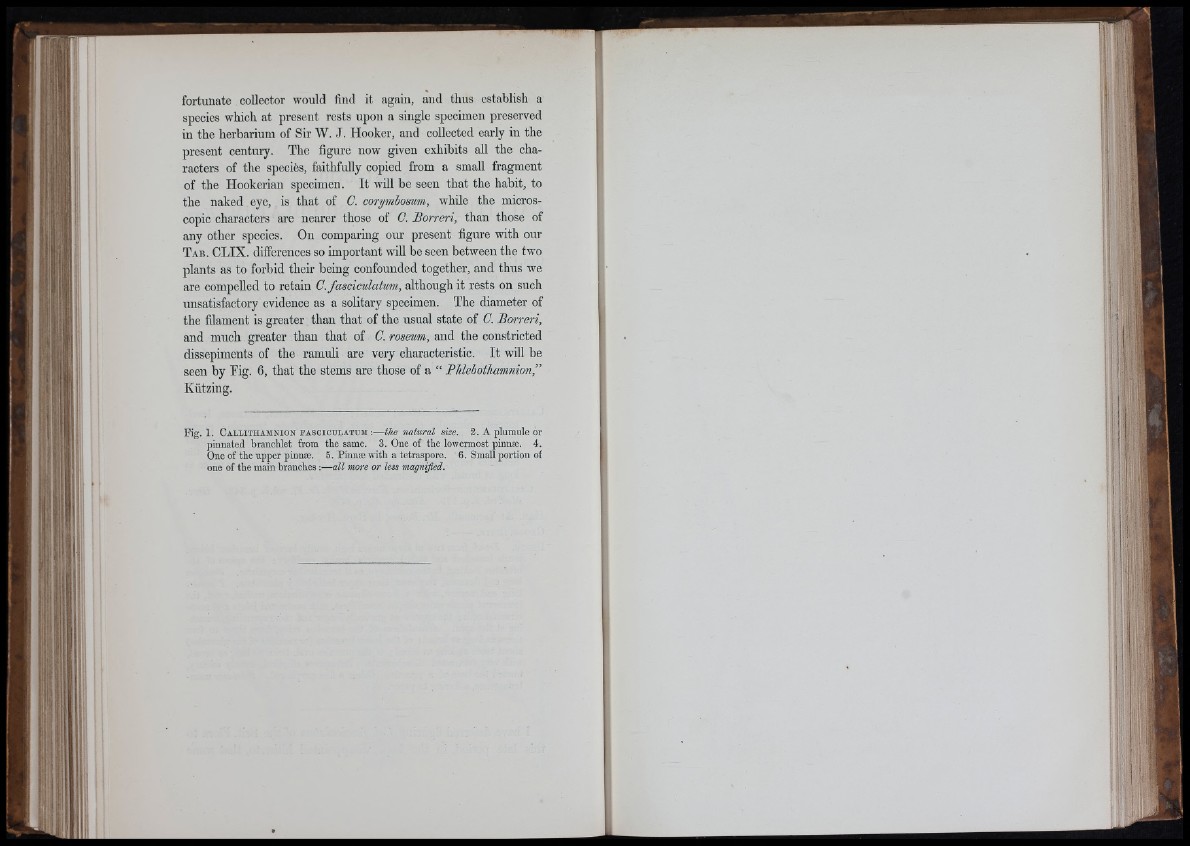
p
P
'! t '
i ("
,1
fortunate collector would find it again, and thus establish a
species which at present rests upon a single specimen preserved
in the herbarium of Sir W. J. Hooker, and collected early in the
present century. The figure now given exhibits all the characters
of the speciès, faithfully copied from a small fragment
of the Hookerian specimen. It will be seen that the habit, to
the naked eye, is that of C. corymbosum, while the microscopic
characters are nearer those of C. Borreri, than those of
any other species. On comparing our present figure with our
T a b . CLIX. differences so important will be seen between the two
plants as to forbid their being confounded together, and thus we
are compelled to retain C. fasciculatum, although it rests on such
unsatisfactory evidence as a solitary specimen. The diameter of
the filament is greater than that of the usual state of C. Borreri,
and much greater than that of C. roseum, and the constricted
dissepiments of the ramuli are very characteristic. It will be
seen by Lig. 6, that the stems are those of a “ Bhlebothamnion,”
Kiitzing.
R g . 1. C a l l it h a m n io n f a s c ic u l a t u m ;■—the natural size. 2. A plumule or
pinnated branchlet from the same. 3. One of the lowermost pinnæ. 4.
One of the upper pinnæ. 5. Pinnæ with a tetraspore. 6. Small portion of
one of the main branches :— all more or less magnified.
A
.L
li